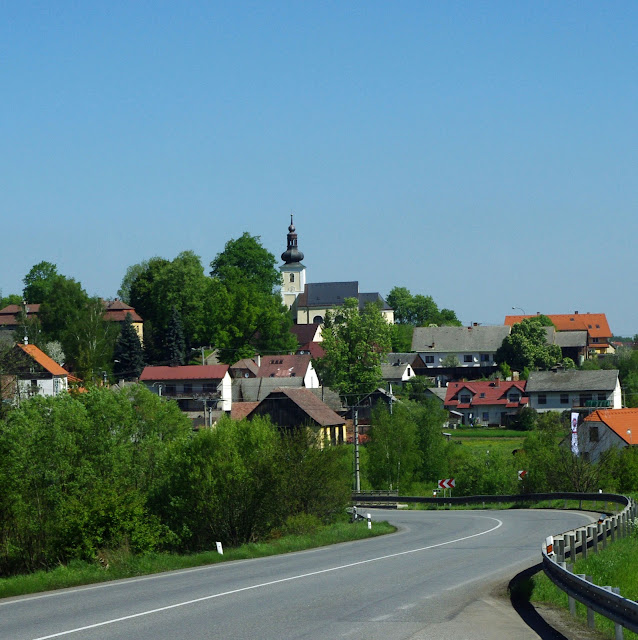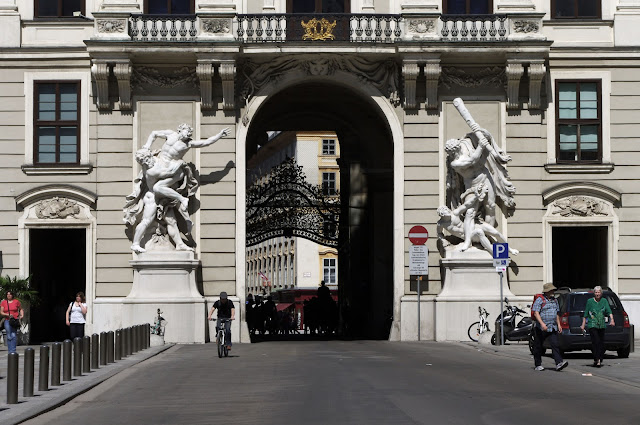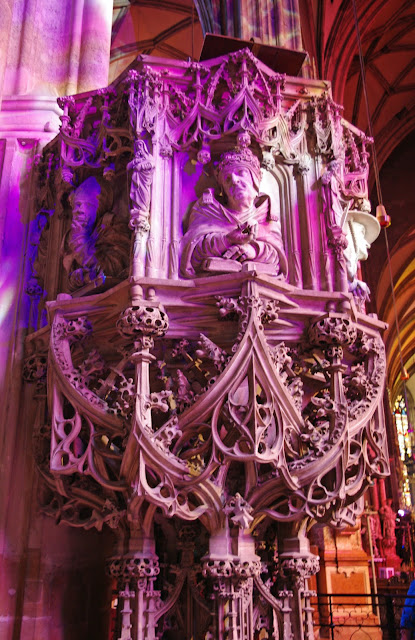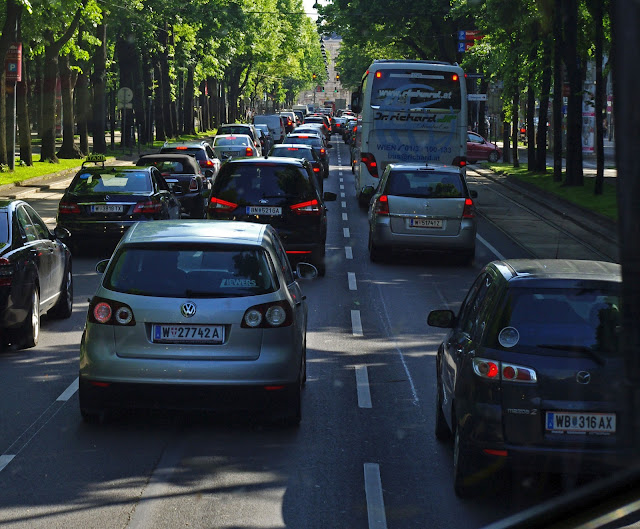Simona, our tour director (from Romania), established a rotating seating assignment. Every travel day we would move up (or back) two rows, this would give more people the opportunity to be seated in the front . I thought I was perfectly satisfied with where I was at, because the side windows were fairly large.
 |
| Simona had a wealth of information she shared with us while traveling. |
his sidekick, Scrat, the Saber-toothed Squirrel from "Ice Age".
 |
| Scrat started all the 'disasters' in "Ice Age". |
We went thru quite a few picturesque villages. Many of the houses had gardens in the small area between their front door and the street. The gardens varied from a well-tended 'kitchen-herb' garden style to more of a wildish 'cottage' garden. I especially liked the scene I viewed of an elderly woman with local style dress/apron/kerchief etc. sweeping her front walk that was lined on both sides by pretty gardens.
The churches with their unique steeples/spires were very eye-catching and could be easily seen.
 |
| I think Scrat also liked the views. |
In between the villages we went by rolling hillsides...
and bright yellow fields of Rapeseed.
If I was not in the front, I would not have gotten to see the back of this truck...
which made me smile.
During part of this day's drive, Simona was telling us a little bit about how it was during the Communist Era( she was a child at the time and told us some of her families experiences) and how it may still be affecting many of the people, especially in their dour demeanor. I really can not imagine how depressing it would be to live where you can not trust ANYONE (even close family members) or where no happiness is expressed...everything so very dreary! She had a few 'jokes' she shared that were on the surface funny, but if you actually thought about them had quite sad undertones to them.
 |
| Some interesting/pretty buildings in the last Czech city we drove thru. |
We drove past Vienna's trash incinerator. It is a unique building 'created' by artist F. Wasserhaus. His underlying principle is "tolerance of irregularities" and has a few other expressionist architecture buildings around to his credit.
 |
| The tower is the smokestack and the gold bulge contains fire control rooms. |
 |
| Hmmm, which beer to try this time? |
 |
| Statue of Maria Theresia in the center of the formal garden, between the two museums. |
 |
| many details on side of the museums |
 |
| different museums are located inside the Neue Burg |
 |
| The main reading room for the national Library is also located here. |
We then go thru one of the gates to the courtyard, In der Burg.
A monument to the Emperor Franz II of Austria was made during the years 1824-1846 and is in the middle of the courtyard.
Here are some of the 'finery' on the buildings surrounding the courtyard.
 |
| A very stunning dome structure above the Michaeltor Gate |
The colorful Renaissance style Schweizertor Gateway leads to the oldest section of the Palace, the 13th century Schweizerhof (Swiss Courtyard).
 |
| Above the archway are the many titles of Emperor Ferdinand I and the insignia of the Order of the Golden Fleece. |
This passageway is quite elaborate with the ornate wrought ironworks of Anton Brio and.....
sculptures subtly placed in nooks ...
and detailed carvings in the domed archway.
 |
| Again, no one is looking up at these 'works of art'. |
 |
| "Mastery of the Sea" |
 |
| There was more talking than viewing here :-( |
 |
| I would like to find out what the figures holding up the golden globe are representing. |
towards Graben street, a very striking street lined with beautiful buildings in a variety of different architectural styles.
 |
| A Jugendstil building, the Ankerhaus- is the one on the right with the square, green trimmed top. |
 |
| I often got a feeling that I was being watched :-) |
 |
| or protected |
 |
| Pigeon on hand is not part of the statue. |
Nearby, tucked away in a side street is the 2nd oldest church in Vienna, St. Peters.
 |
| The dome is huge compared to the two towers. |
 |
| The Haas Haus on the left created quite a stir for being so modern and crowding the cathedral. |
 |
| The Romanesque front, Gothic sides and South tower and a Renaissance cupola can be seen in this picture. |
 |
| Part of a skeleton at the top of this plaque caught my eye. |
 |
| The roof has more than 200,000 glazed tiles, this side is a chevron design. |
Here are some of the stained glass windows in the church.
 |
| carvings at the base of the pulpit. |
 |
| Up close of their facial expressions |
 |
| A stone mason tool grasped in his hand. |
The Baroque black marble high altar has statues of four saints, and the central painting is of the stoning of St. Stephen.
The 1447 winged Wiener Neustadter Altar was brought to St. Stephens Cathedral from a cloister in the late 19th century.
 |
| The panels have saints and scenes from the lives of Jesus and Mary. |
This is the end of the city tour, but here are few more pictures from our walk around Vienna and back to where our bus picks us up at.
 |
| I like the mosaic and hedgehog(?) |
 |
| This scene reminds me of family |
 |
| The colorful flower is a mosaic. |
This is one main reason why I like being on tours; I do not have to deal with the traffic along with trying to figure out the directions....
I just enjoy the scenery and leave all the hassles to our bus driver:

















































